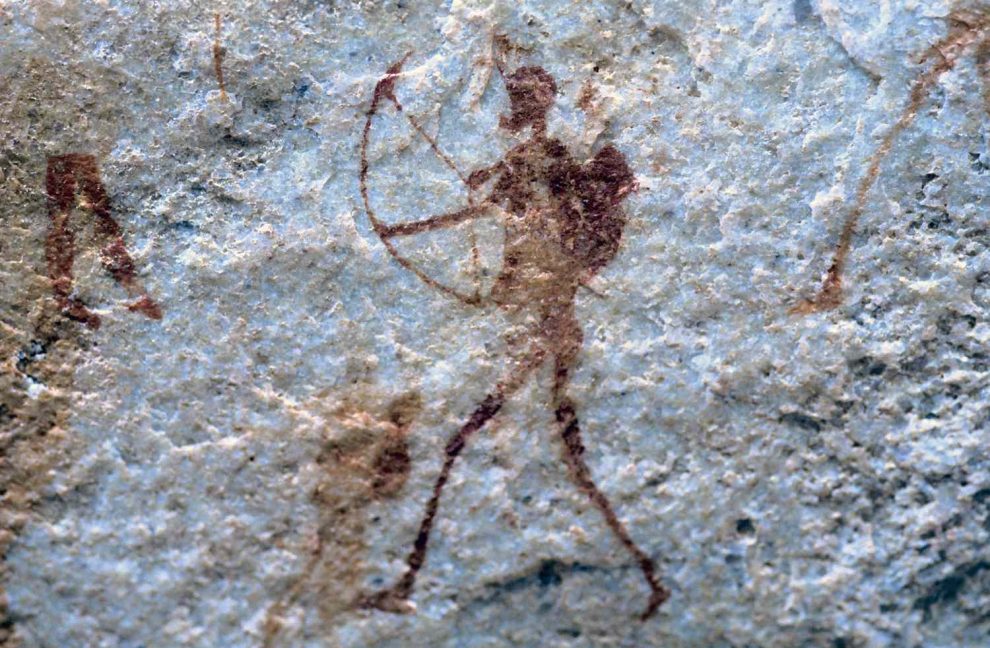The bow and arrow, one of humanity’s most iconic inventions, revolutionized our ability to hunt, defend, and survive. The discovery of the bow and arrow marked a significant turning point in human history, enhancing our hunting efficiency, expanding our territorial reach, and influencing the course of civilization. In this blog post, we will delve into the fascinating world of the bow and arrow, exploring its origins, development, and its enduring impact on human societies.
I. Origins of Archery:
- Early Projectile Weapons: The use of projectile weapons can be traced back to early humans who relied on throwing sticks and spears for hunting and self-defense. These primitive weapons laid the foundation for the development of the bow and arrow.
- Mesolithic and Neolithic Eras: The transition from stone tools to more sophisticated technologies during the Mesolithic and Neolithic periods played a crucial role in the emergence of archery. Advances in material technology and craftsmanship contributed to the creation of more efficient hunting tools.
II. Development of the Bow:
- Bow Design and Construction: The bow consists of a flexible piece of material, typically wood, with a string attached to both ends. As the string is drawn back and released, it propels the arrow forward with increased speed and accuracy.
- Composite Bows: Various cultures around the world, such as the Mongols, Huns, and Egyptians, developed composite bows made from a combination of different materials like wood, bone, sinew, and horn. These bows provided greater power and range compared to simple wooden bows.
III. The Arrow:
- Arrowhead Evolution: The arrowhead, attached to the front end of the arrow, underwent significant changes over time. Initially made of stone or bone, arrowheads evolved into more efficient designs, such as metal tips, expanding their lethality and effectiveness.
- Fletching: Fletching, the addition of feathers or other materials to the back end of the arrow, provided stabilization and improved accuracy during flight. Different fletching techniques and materials were employed across cultures and time periods.
IV. Archery in Hunting and Warfare:
- Hunting Advantages: The introduction of the bow and arrow revolutionized hunting practices, enabling humans to kill prey from a distance and with increased accuracy. Archery enhanced the efficiency of hunting, leading to more successful hunts and a stable food supply.
- Military Applications: The adoption of archery in warfare had profound consequences for military tactics and strategies. Archers played a vital role in ancient armies, providing long-range support and altering the dynamics of battles.
V. Cultural and Symbolic Significance:
- Archery in Mythology and Legends: Archery has been a prominent feature in myths, legends, and folklore across cultures. Legendary archers, such as Robin Hood and Hou Yi, have become enduring symbols of skill, precision, and heroism.
- Sporting Traditions: Archery evolved into a popular recreational activity and sport, with competitive tournaments and Olympic events held worldwide. Archery competitions showcase skill, focus, and discipline, celebrating the rich historical and cultural heritage of the discipline.
VI. Modern Archery:
- Technological Advances: Modern archery has witnessed significant advancements in materials, designs, and equipment. Compound bows, carbon fiber arrows, and advanced sights and releases have enhanced accuracy and performance.
- Recreational and Competitive Archery: Archery has experienced a resurgence in popularity as a recreational and competitive sport. Archery clubs, leagues, and competitions provide opportunities for individuals of all ages to engage in this ancient practice.
Conclusion: The discovery of the bow and arrow was a pivotal moment in human history, shaping our survival, culture, and warfare strategies. The bow and arrow provided humans with an unprecedented advantage, revolutionizing hunting, expanding territories, and leaving an indelible mark on our cultural heritage. Today, archery continues to captivate and inspire people worldwide, honoring our ancestral connection to this timeless and versatile tool.




















Add Comment